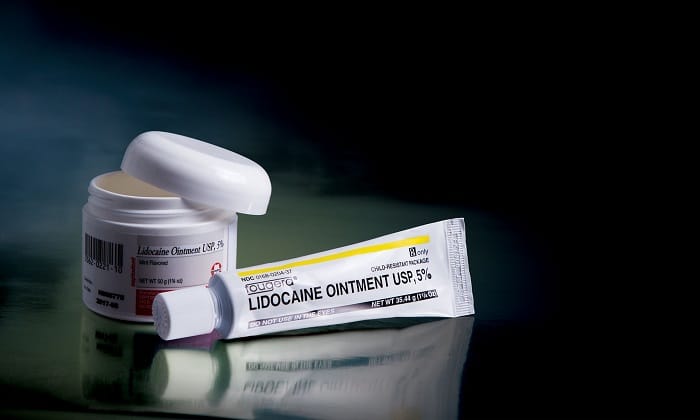SHARE THIS ARTICLE

General Public
What is Lidocaine (Xylocaine) Used For & What are Its Side Effects?
Jun 29, 2018
*Disclaimer: Information on Maylips.com is provided for informational purposes only. Self-medication is strictly prohibited. All aesthetic procedures should be provided by the licensed healthcare specialist after the consultation with the personal therapist. The information in this article should not be used for prescribing any medication for the beauty injections.
All brand and medication descriptions in the article are based on the personal opinion and are not endorsed by Maylips.com. The article content was not reviewed for medical validity. Use this article for information and not for a final decision on the procedure.
What is lidocaine (xylocaine, lignocaine)?
Lidocaine is a type of medication that is used to induce temporary numbness in localised areas in preparation for medical procedures. This is an amide-type anaesthetic agent is sometimes referred to as xylocaine or lignocaine.
How are pain sensations produced by the body?
Pain can be caused by a myriad of factors and nociceptors are differentiated based on the type of stimuli that they detect. These include thermal, mechanical, and chemical. Silent pain receptors are activated when there is any inflammation or tissue injuries. Following exposure to harmful stimuli (e.g. heat, incisions that break the skin’s surface, corrosive chemicals, etc.), tissues become damaged and appropriate pain receptors get activated. Electrical signals are then generated and propagated along the nerve cells to the spinal cord and the brain for processing. These pain sensations will then quickly alert the body of dangerous situations and prevent further injuries.
What is the mechanism of action of lidocaine?
Despite being an important survival mechanism, pain sensations are inconvenient side effects of medical procedures. Lidocaine is then used to effectively suppress pain and discomfort during treatment sessions. Once applied topically, xylocaine blocks the fast voltage gated sodium (Na+) channels in the nerve cells. This not only results in altered propagation of pain signals along the nerves to the brain, but it also aborts the production of pain signals in the first place. Hence, pain and discomfort are successfully suppressed temporarily.
What are the indications for xylocaine?
Due to its rapid onset of action with intermediate duration of anaesthetic activity, lidocaine is used as the active ingredient in various over-the-counter (OTC) products such as pain-relieving topical antiseptic creams and sunburn soothing sprays. Besides OTC products, lignocaine is also used vastly for various medical purposes which are:
- Local anaesthetic agent: Topical numbing products like Emla cream contain lidocaine to instantly suppress pain. These lidocaine-containing creams are usually applied before minor medical procedures (e.g. blood sampling, tattoo removal, needle insertion, hair removal, vaccination, circumcision, etc.) to ensure that patients are pain-free during the treatment session. Besides being used before minor medical procedures, some of the lidocaine-containing gels can also be applied after the treatment sessions to relieve pain and quicken wound healing.
- Heart arrhythmia: This condition is marked by irregular heartbeats. Lidocaine is classified as an important class-1b antiarrhythmic drug that helps to interfere with the sodium channels in the heart to stabilise the conduction of impulses along the heart muscles. It is usually given to patients who have just had undergone defibrillation or cardiopulmonary resuscitation (CPR); xylocaine is not suitable to be used as a long-term preventive dose following a myocardial infarction episode.
- Epilepsy: Lignocaine can also be used intravenously for the treatment of neonatal seizures. It is prescribed as a second line of treatment in the event where phenobarbital fails to stop neonatal seizures.
Besides the major health indications stated above, lidocaine can also be used as a cough suppressor to help reduce the cough reflex. This is usually indicated for patients who have been intubated as it helps to reduce the risk of coughing and subsequent tracheal damage. Patients affected by jellyfish stings can also be treated with a combination of lidocaine, ethanol, ammonia, and acetic acid. This concoction not only suppresses pain, it also prevents nematocyst discharge.
What are the side effects of lidocaine?
If administered accurately, lidocaine should not cause adverse health effects in patients; however, some patients have experienced the following side effects following topical application of lidocaine.
- Site reactions: Rashes, burning sensation, dermatitis, redness, itchiness, and formation of vesicles.
- Side effects affecting the nervous system: Headache, lightheadedness, taste alteration, somnolence, hyperesthesia, and hypoesthesia.
- Side effects affecting the gastrointestinal system: Nausea and vomiting.
Some patients have also experienced allergic responses, but these reactions are quite rare. Serious side effects associated with lidocaine for anaesthesia are usually caused by inaccurate administration techniques or the pharmacologic effects of xylocaine itself. Patients must get immediate medical attention if they experience any of the side effects of lignocaine to prevent life-threatening complications.
*Disclaimer: Information on Maylips.com is provided for informational purposes only. Self-medication is strictly prohibited. All aesthetic procedures should be provided by the licensed healthcare specialist after the consultation with the personal therapist. The information in this article should not be used for prescribing any medication for the beauty injections.
All brand and medication descriptions in the article are based on the personal opinion and are not endorsed by Maylips.com. The article content was not reviewed for medical validity. Use this article for information and not for a final decision on the procedure.

